#claytonia virginica
Explore tagged Tumblr posts
Text
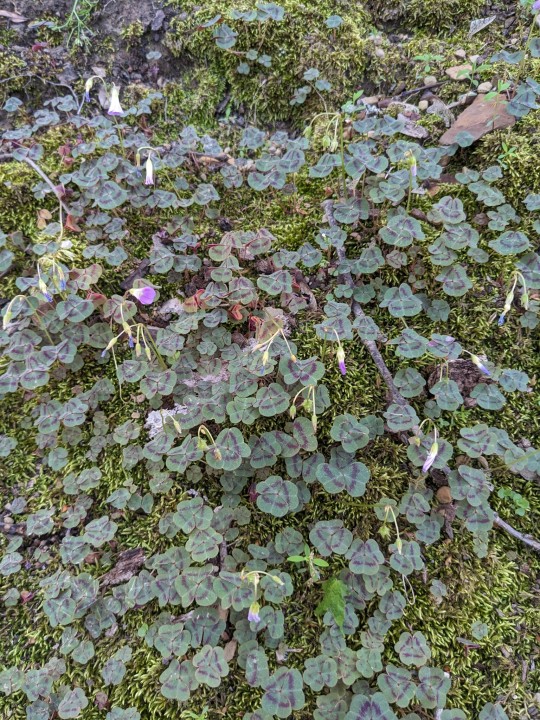

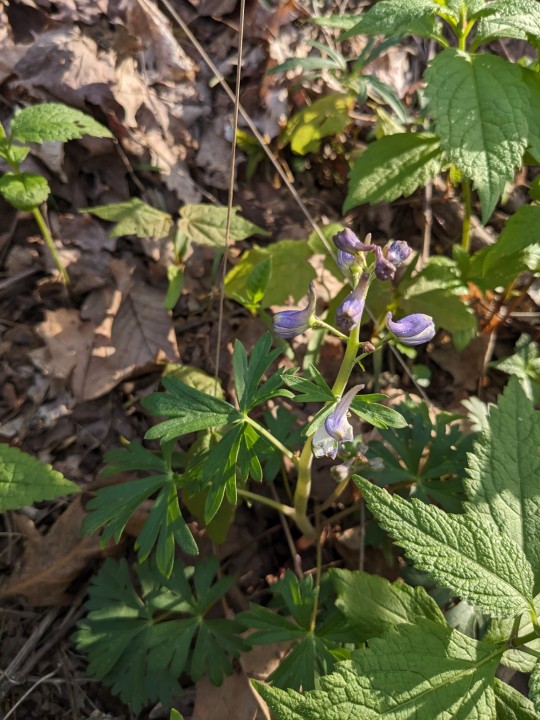
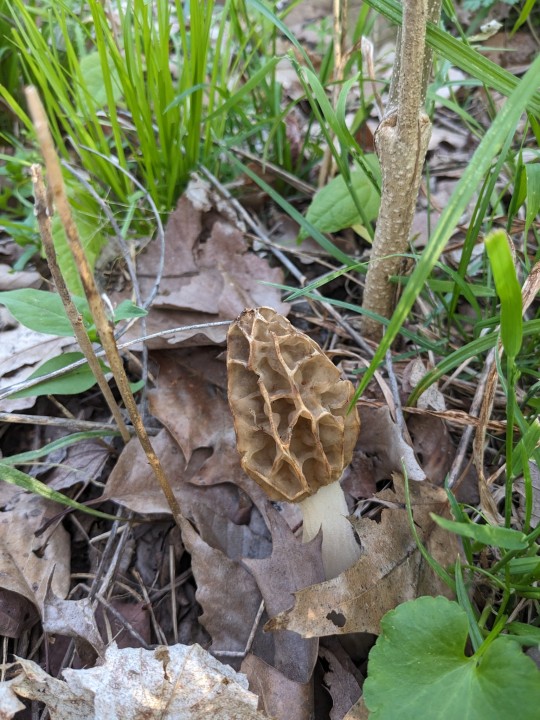
More spring wildflowers, and a morel
#landscape#landscape photography#nature#nature photography#naturecore#photography#photographers on tumblr#trees#woods#forest#flowers#wildflowers#wood sorrel#oxalis#claytonia#claytonia virginica#spring beauty#delphinium#larkspur#dwarf larkspur#wild fungi#fungi#morel#mushroom#april#spring#kentucky
55 notes
·
View notes
Text

Virginia Springbeauties
Claytonia virginica
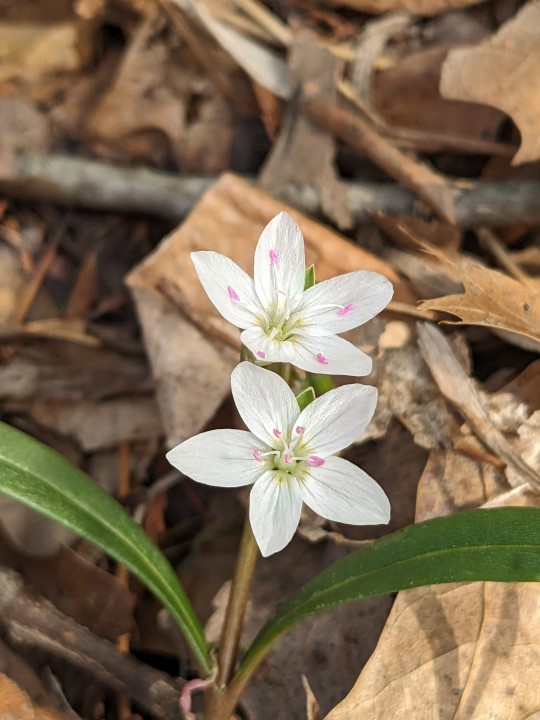
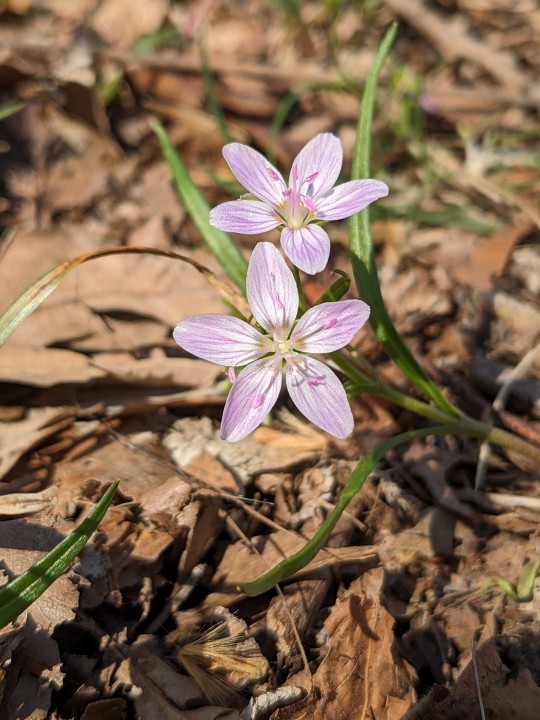

This beautiful little spring ephemeral is found throughout eastern North America and is sometimes also known as fairy spud.
St. Charles County, Missouri, USA
March 13th, 2024
Olivia R. Myers
@oliviarosaline
#nature#woods#forest#forest floor#spring#spring flowers#virginia springbeauties#virginia spring beauty#spring beauties#flowers#pink flowers#white flowers#botany#fairycore#cottagecore#fairy core#cottage core#forestcore#naturecore#ozarks#the ozarks#plants#forests#flower photography#spring photography#early spring#claytonia virginica#claytonia#wild flowers#montiaceae
35 notes
·
View notes
Text


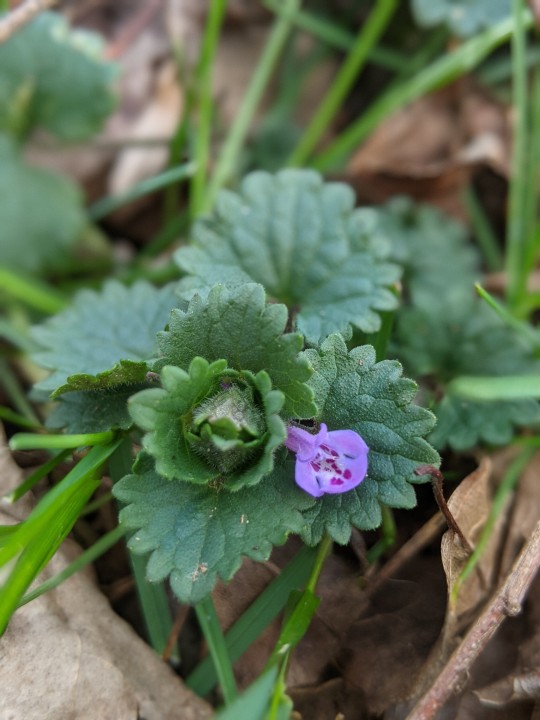



What's poppin' in late February: Part 2 of ~7
Spring Beauty (Claytonia virginica) Creeping Charlie (Glechoma hederacea) Periwinkle (Vinca minor) Ivy-Leaved Speedwell (Veronica hederifolia)
#claytonia#plant id#spring wildflowers#wildflowers#glechoma#vinca#veronica#veronica hederifolia#glechoma hederacea#vinca minor#claytonia virginica#forest floor#just little pretty things down near the ground#they don't matter but also they are everything
52 notes
·
View notes
Photo
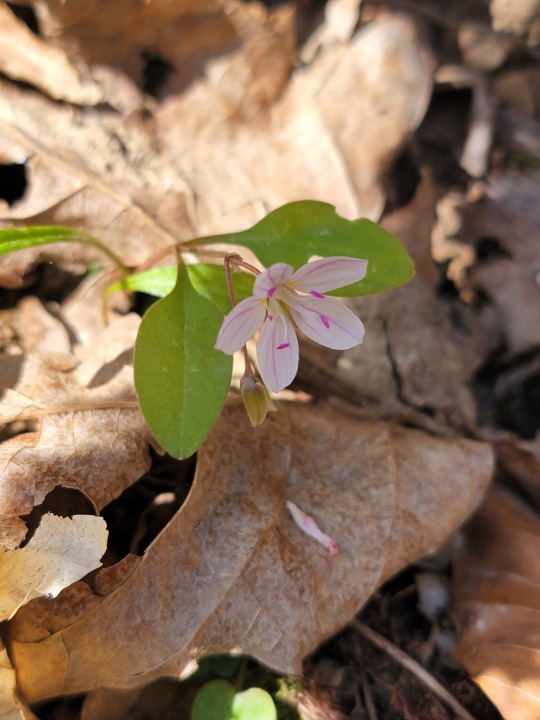
Broad leaf or Carolina spring Beaut’
Claytonia caroliniana
Virginia spring beaut leaves in background just starting to leaf out
Claytonia virginica
Photographed in RRG in mixed mesophytic woodland, Carolina spring beaut has a few great lakes region United States pops and is mainly found in the core regions of the Appalachian Mountains. A true disjunction as a lower ozark plat pop is in Arkansas; where as the rich alkaline mesic woods and bottomland forests are packed with Virginia spring beaut until you hit semi arid regions and where the central plains starts becoming the rocky mountain region.

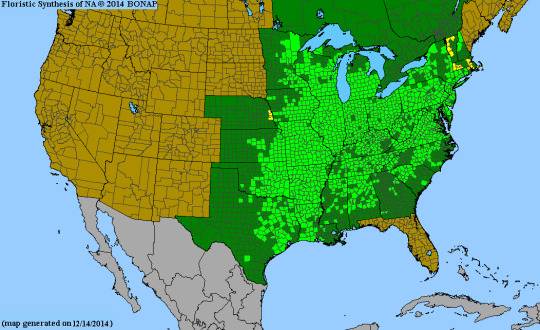
26 notes
·
View notes
Photo

First Spring Beauties (Claytonia virginica) I’ve seen this year. Lucky to feel ok enough to hike.
A clever eye will spot the beginning of some other spring wildflowers as well :3
#plant#Claytonia virginica#still bad with IDing early flowers but#i think i see a trillium#some violets#spring be here yall#na
1 note
·
View note
Text
3-31-24: First Wildflower Walk of 2024...
Hello everyone! I hope this post finds you well. We finally had a good soaking! Lighting, thunder, and lots of rain! The rain gauge said 1 3/4″ in the end. I went Moral mushroom hunting on Saturday and found around 20, but most of them were on the small side so I left them behind. I found a few that were big enough to fill a 9″ skillet. Then on Sunday, I went to my friend Kevin’s secluded woods…

View On WordPress
#Cardamine concatenata (Cut Leaved Toothwort)#Claytonia virginica (Virginia Spring Beauty)#Dicentra cucullaria (Dutchman&039;s Breeches)#Ellisia nyctelea (Aunt Lucy)#Erythronium albidum (White Fawnlily)#Phlox divaricata (Wild Blue Phlox)#Triosteum perfoliatum (Perfoliate Tinker&039;s Weed)#Viola pubescens (Downy Yellow Violet)
0 notes
Photo
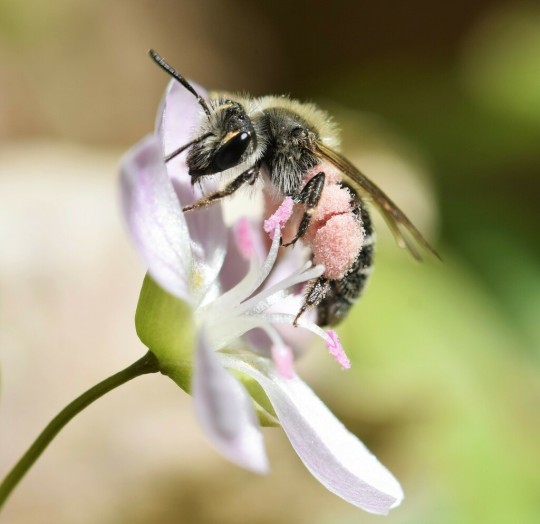
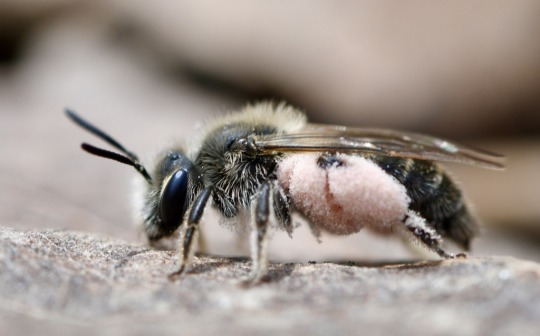
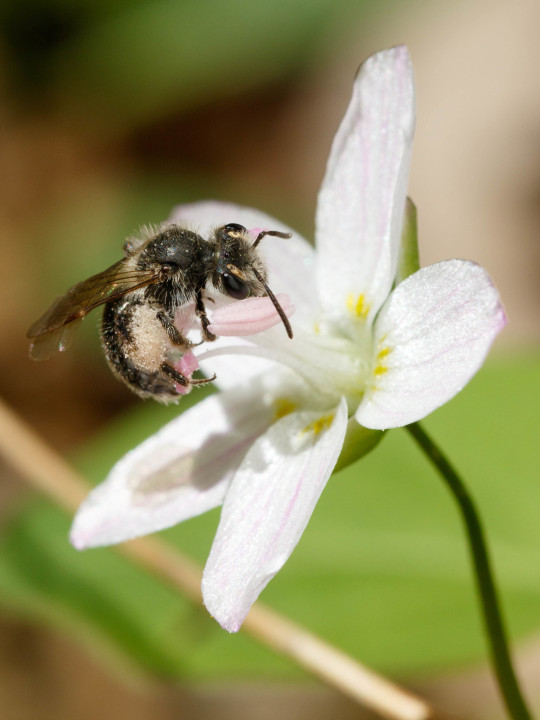


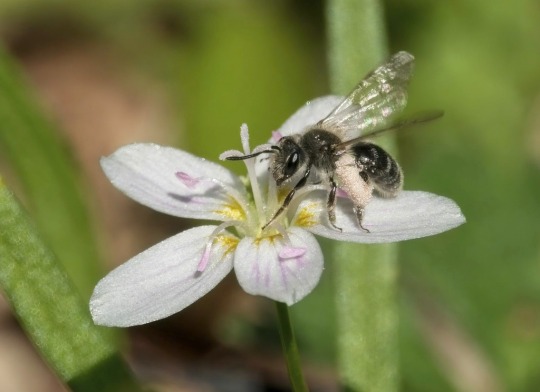
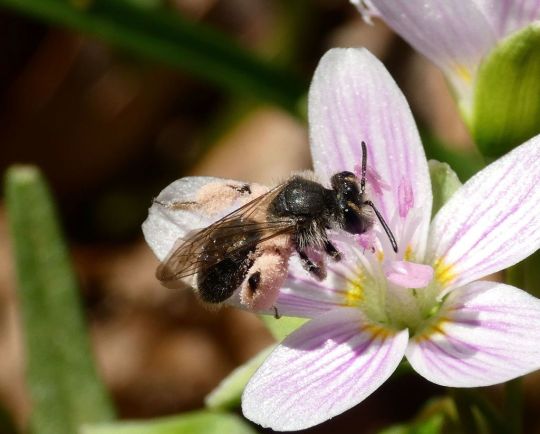
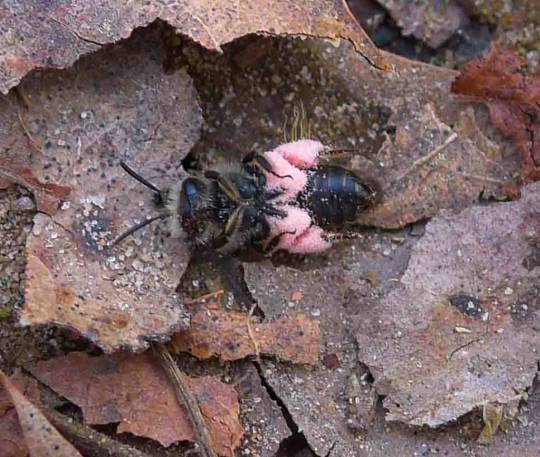
Spring beauty miner bee, Andrena erigenia, Andrenidae
Spring beauty miner bees are a solitary, ground-nesting species that relies on spring beauty flowers (Claytonia virginica) to obtain nectar for themselves and both nectar and pollen for their larvae. The hairs on the female bee’s legs collect the striking pink pollen to bring back to her larvae. Found in the eastern United States and up into Canada.
Photo 1 by rileywalsh, 2 by chelsealynne, 3 by mmccarthy98, 4-5 by judygva, 6 by kristym, 7 by davidenrique, and 8 (don’t worry, she’s alive) by allenbryan
#animals#curators on tumblr#insects#bugs#bee#miner bee#spring beauty miner bee#one nice bug#lost in the (pink) sauce
3K notes
·
View notes
Text

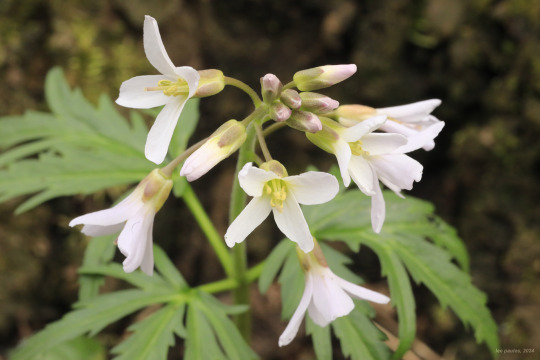

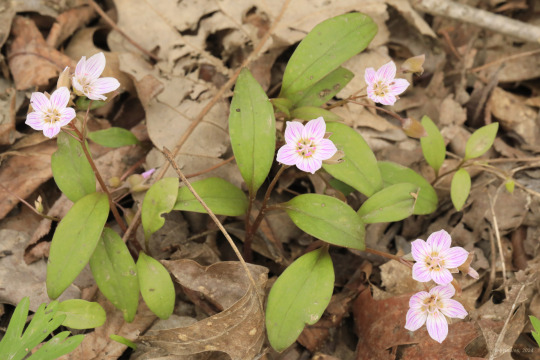
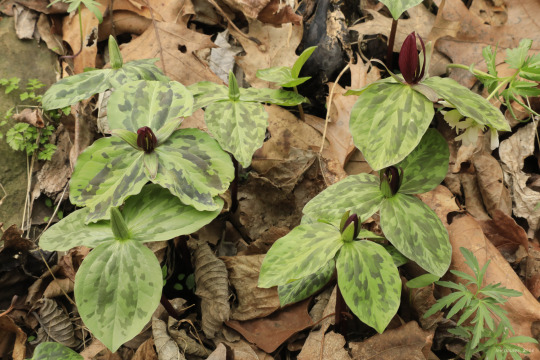




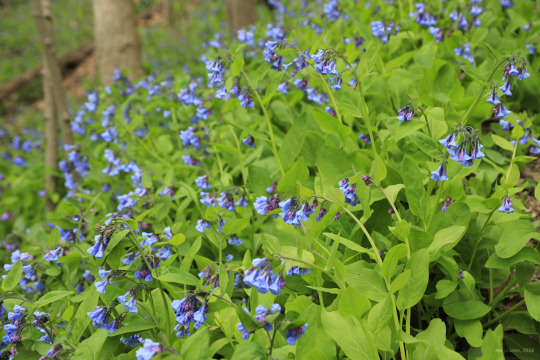
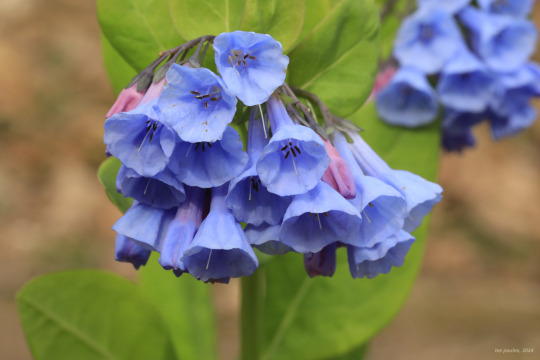
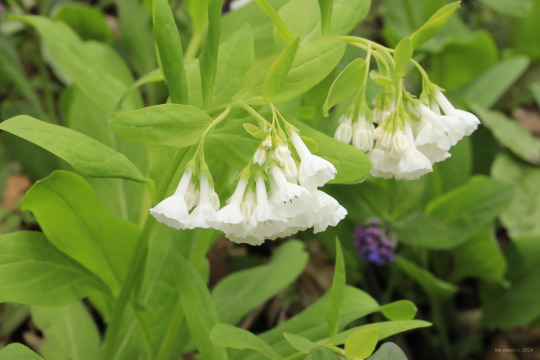

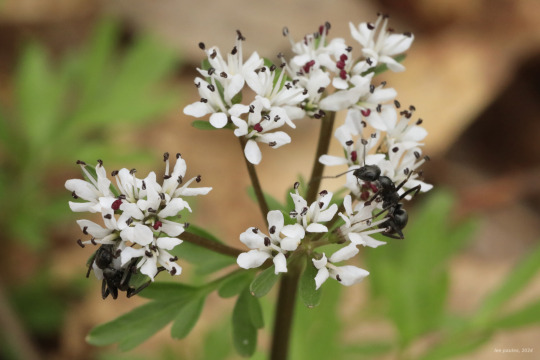

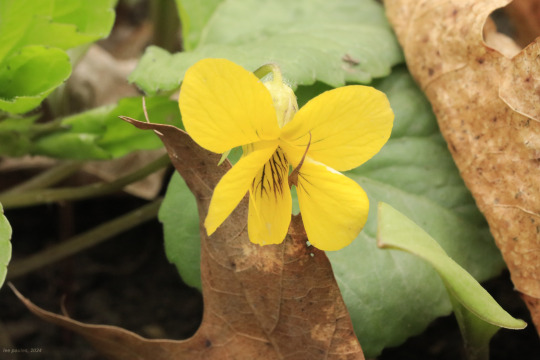
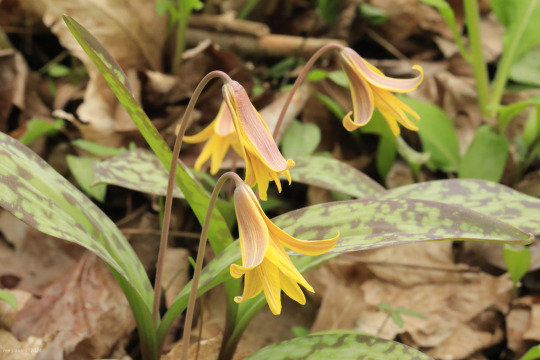



An Easter bouquet of some of Central Appalachia's finest spring wildflowers, courtesy of Core Arboretum at West Virginia University.
From top: cutleaf toothwort (Cardamine concatenata); Virginia spring beauty (Claytonia virginica); Carolina spring beauty (Claytonia caroliniana); sessile trillium (Trillium sessile); twinleaf (Jeffersonia diphylla); immature golden ragwort (Packera aurea); dwarf larkspur (Delphinium tricorne); Virginia bluebells (Mertensia virginica), including a rare white-flowered variation; woodland phlox (Phlox divaricata), also known as wild blue phlox; harbinger of spring (Erigenia bulbosa), also known as pepper and salt; Dutchman's breeches (Dicentra cucullaria); downy yellow violet (Viola pubescens); yellow trout lily (Erythronium americanum), also known as dog-tooth violet; and celandine poppy (Stylophorum diphyllum), also known as wood poppy.
#appalachia#vandalia#west virginia#spring#wildflowers#flora#core arboretum#west virginia university#morgantown
83 notes
·
View notes
Text
My Garden Flowers Part 3
All photos mine. The small buttercup and evening primrose are edited for colour since the camera didn't catch it and washed it out.
In order of appearance:
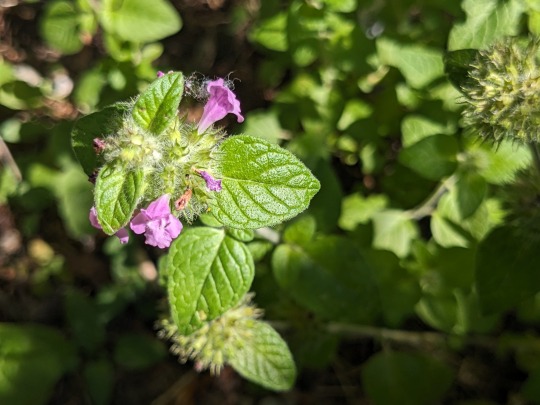
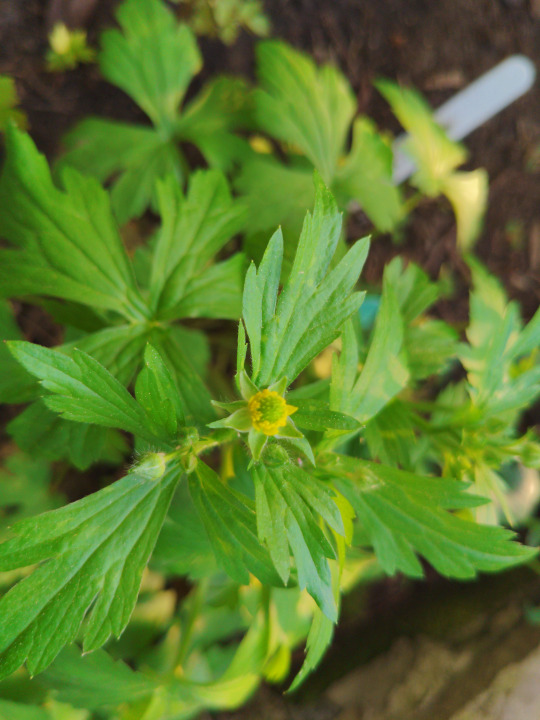


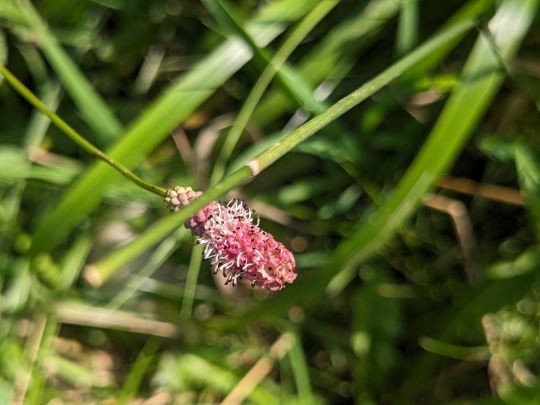



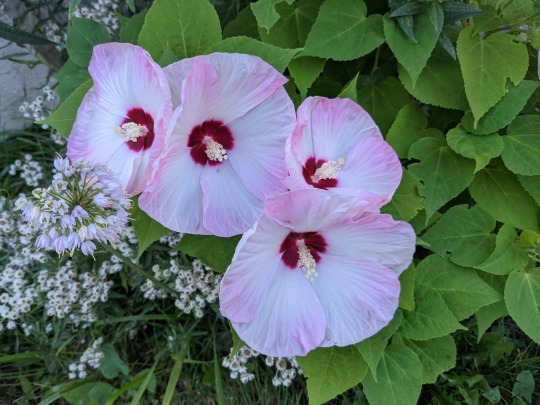
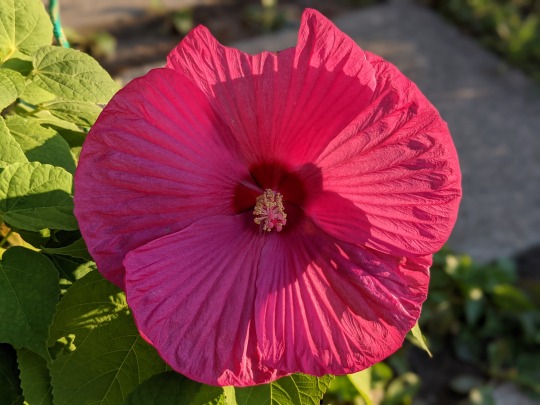
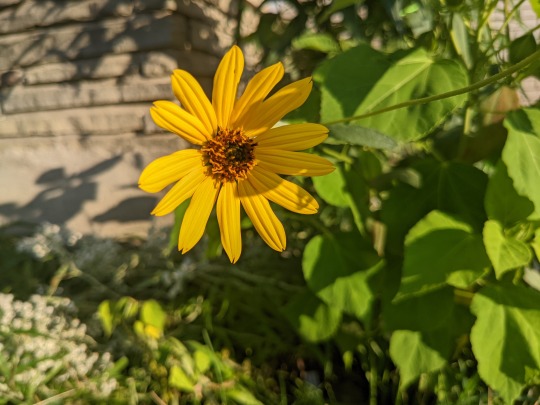

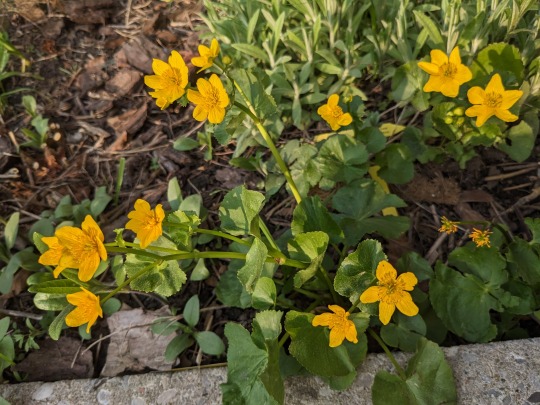

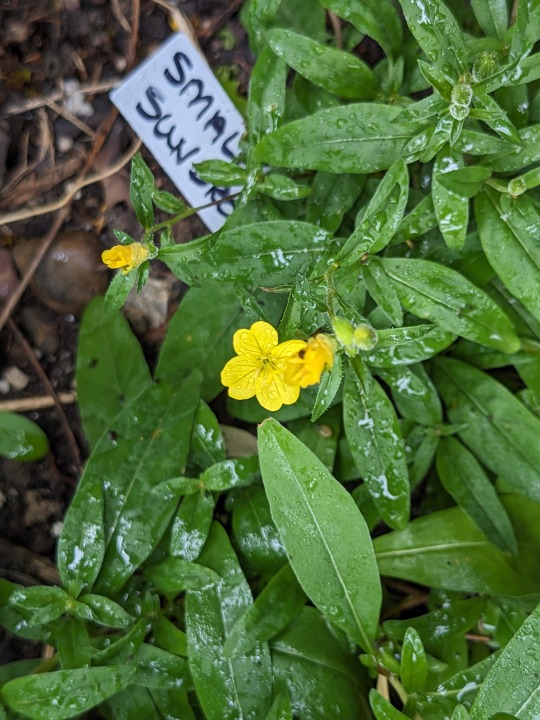

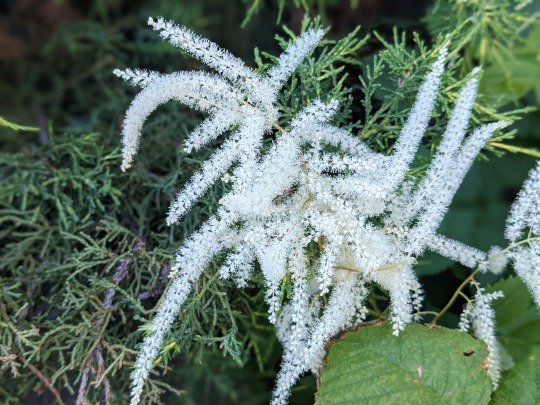
In order of appearance:
061. Wild Basil (Clinopodium vulgare) Didn't do so well the last place I had her in, but she seems happy in this spot, so fingers crossed.
062. Crested Iris (Iris cristata) Not pictured as she hasn't flowered yet.
063. Smallflower Buttercup (Rancunculus abortivus) Not much to look at compared with other buttercups but one of the only native buttercups with (limited) edible uses.
064. Smooth Solomon's Seal (Polygonatum biflorum) Not pictured as she hasn't flowered yet. Soon, hopefully!
065. False Solomon's Seal (Maianthemum racemosa) Not pictured as she hasn't flowered yet, but she's growing well so hopefully next year.
066. Blisterwort (Ranunculus recurvatus) I didn't plant that. She just turned up last year. Not pictured as I haven't got any pictures yet.
067. Fairy Spuds (Claytonia virginica) Not pictured as she hasn't flowered yet. She's a wee little spud in the ground.
068. Flowering Dogwood (Cornus floridus) Not pictured as she hasn't flowered yet but she is slowly spreading out.
069. Plantain-Leaf Sedge (Carex plantaginea) Not pictured as I haven't got pictures yet. I should. It's a neat plant. Evergreen, too!
070. Virginia Bluebells (Mertensia virginica) One of the prettiest plants I've ever seen, from the shape and texture of the leaves to the purplish pink buds to the bright blue bell-shaped flowers. They're spring ephemerals, though, so they're long gone by now. But will emerge next spring!
071. Evening Primrose (Oenothera biennis) Only lives for two years and reseeds itself. It's a common weed along sidewalks, but its flowers glow yellow in the evening and often remain in bloom at night.
072. Squirrel Corn (Dicentra canadensis) Not pictured as she hasn't flowered yet. The leaves are really cute, though.
073. Large Toothwort (Cardamine maxima) Not pictured as she hasn't flowered yet.
074. Wintergreen (Gaultheria procumbens) Not pictured as I haven't got any pictures yet.
075. Great Burnet (Sanguisorba officinalis) A cultivar, not sure which one. I'll get the wild type if/when I can.
076. American Plum (Prunus americana) I was not expecting her to flower this year! Hopefully she will next year too, and without aphids this time so I can have some plums. :)
077. Smooth Aster (Symphyotrichum laeve) So like I said, I do think New England asters are the prettiest of this genus, but smooth asters are very nice in their own way. Tender bluish leaves, and delicate light purple flowers.
078. Sweet Grass (Hierochloe odorata) Not pictured as I haven't got any pictures yet. She only flowered one year. Hasn't since. I won't miss a photo next time.
079. Nodding Onion (Allium cernuum) What's better than pretty flowers? Tasty pretty flowers!
080-081. Swamp Rose Mallow (Hibiscus moscheutos) Two different cultivars and the red one has died, but I did get my hands on the wild type! That will hopefully bloom this year.
082. Stiff Sunflower (Helianthus pauciflorus subrhomboideus) Holds her own against the much more aggressive Nuttall's sunflower. Sometimes called beautiful sunflower. I don't know how one decides which species of a very showy genus gets that name, but I guess she won out.
083. Pearly Everlasting (Anaphalis margaritacea) Another one that was hard to choose a photo of. You just hardly believe they're real!
084. Marsh Marigold (Caltha palustris) I planted her where there's a drip from the eavestrough so she can get very wet when it rains. :) She is not a marigold but instead part of the buttercup family.
085. Nuttall's Sunflower (Helianthus nuttallii) Whenever I am expressing frustration about sunflowers, it is almost always this species. lol Very beautiful but very aggressive.
086. Larkspur Violet (Viola pedatifida) Not pictured as she hasn't flowered yet.
087. White Turtlehead (Chelone glabra) Not pictured as she hasn't flowered yet.
088. Small Sundrops (Oenothera perennis) Not quite as intensely yellow as some of her relatives but still very bright.
089. Bigleaf Aster (Eurybia macrophylla) You generally grow her for foliage rather than her flowers, but flowering she is! Very drought-tolerant, but spreads more readily in less harsh conditions.
090. Bride's Feathers (Aruncus dioicus) Southern Ontario and surrounding area's evolution really went off on the lacy white flowers, and this species' flowers might be the laciest of them all.
#blackswallowtailbutterfly#my photos#photography#my garden#garden flowers#native plant gardening#native flowers of Carolinian Canada and USA#Viola sororia#Rancunculus abortivus#Mertensia virginica#Oenothera biennis#Sanguisorba officinalis#Prunus americana#Symphyotrichum laeve#Allium cernuum#Hibiscus moscheutos#Helianthus pauciflorus subrhomboideus#Anaphalis margaritacea#Caltha palustris#Helianthus nuttallii#Oenothera perennis#Aruncus dioicus
11 notes
·
View notes
Text

First true Spring wildflowers!! Virginia Creeper (Claytonia virginica)
4/18/23
19 notes
·
View notes
Text

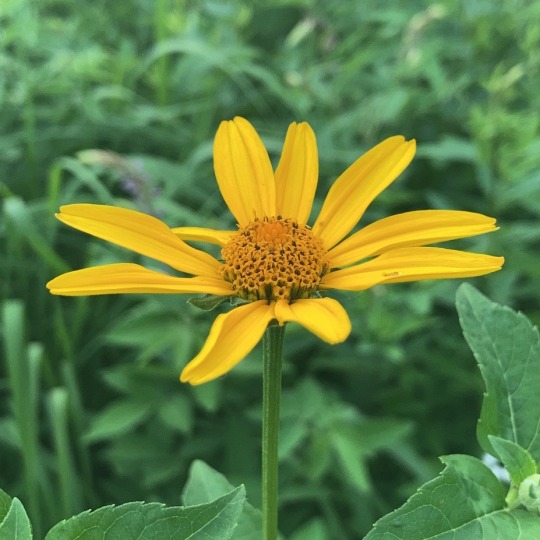

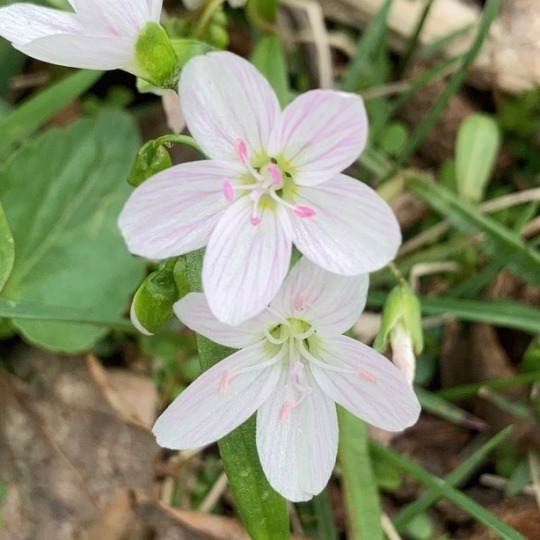
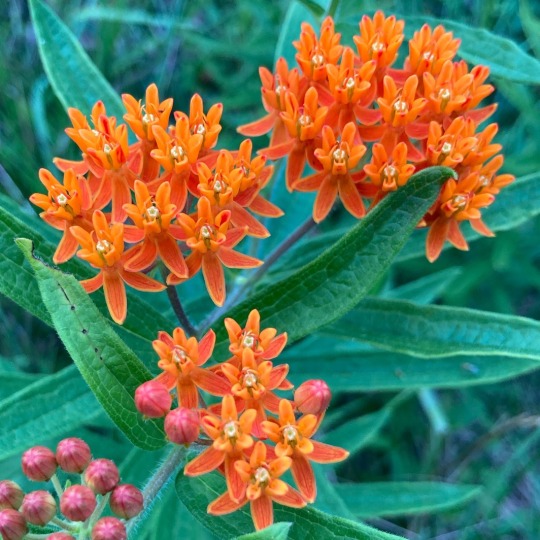
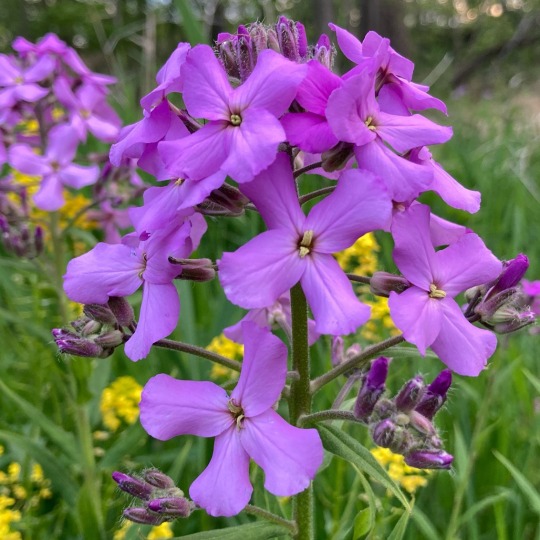


1. Chicory (Cichorium intybus), 2. False Sunflower (Heliopsis helianthoides) 3. Alsike Clover (Trifolium hybridum), 4. Virginia Springbeauty (Claytonia virginica), 5. Butterfly Milkweed (Asclepias tuberosa), 6. Dame’s Rocket (Hesperis matronalis), 7. Queen Anne’s Lace (Daucus carota), 8. Common Star-of-Bethlehem (Ornithogalum umbellatum)
11 notes
·
View notes
Text
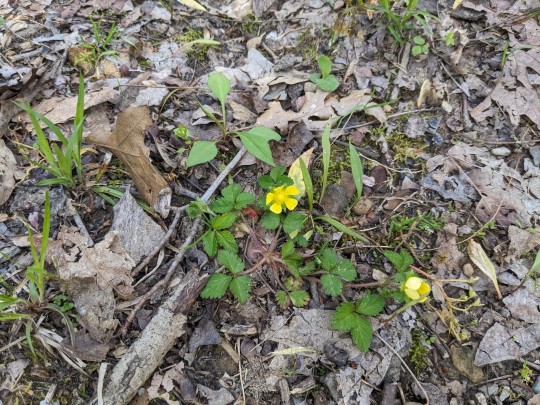
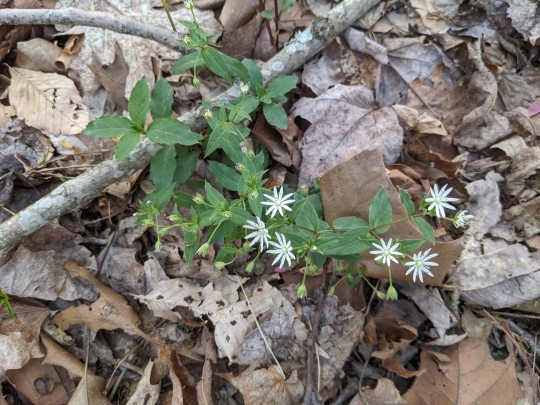



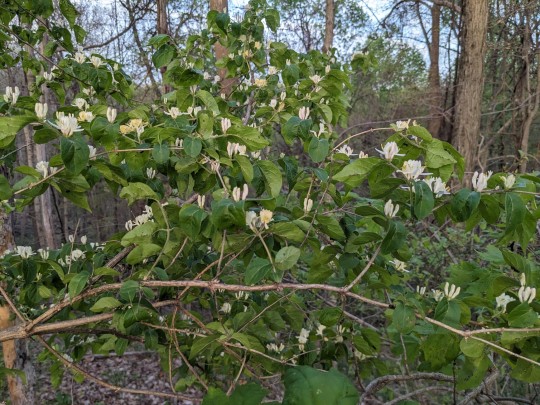
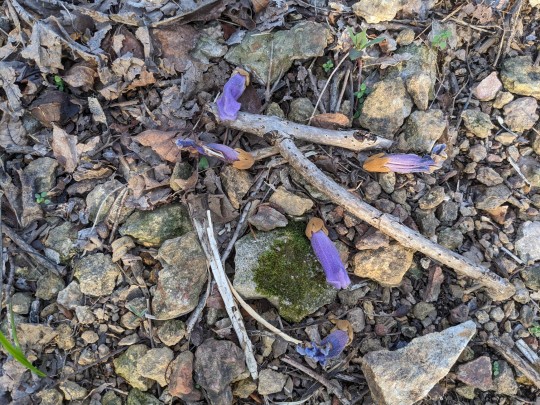
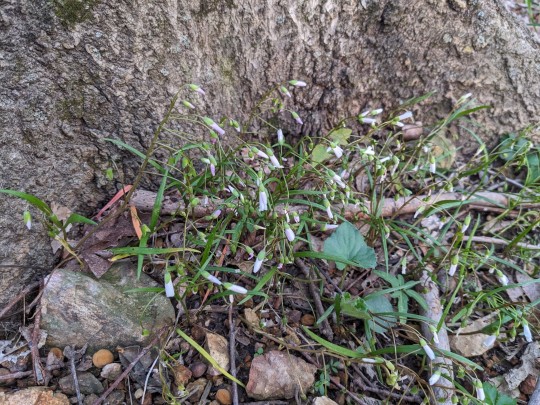
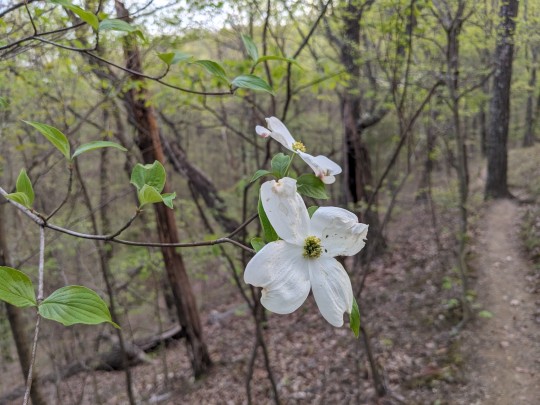
Spring wildflowers
#landscape#landscape photography#nature#nature photography#naturecore#photography#photographers on tumblr#trees#woods#forest#flowers#violet#viola#wood sorrel#oxalis#chickweed#stellaria#stellaria pubera#paulownia#honeysuckle#lonicera#cinquefoil#potentilla#spring beauty#claytonia#claytonia virginica#cornus#cornus florida#dogwood#kentucky
27 notes
·
View notes
Text
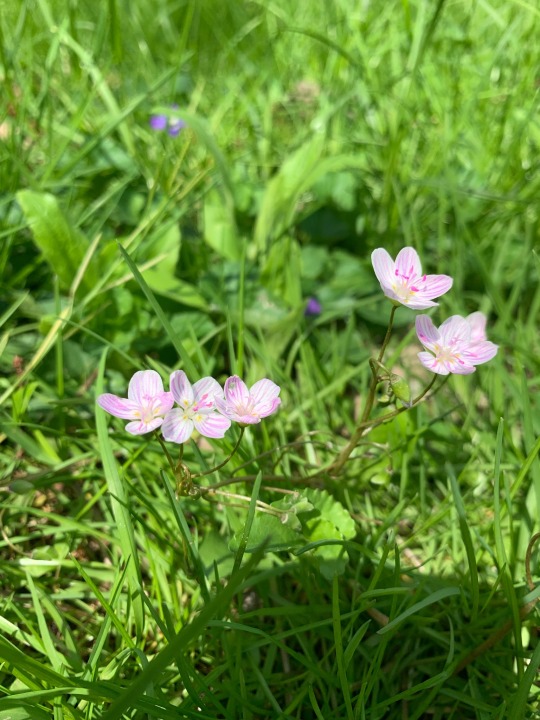
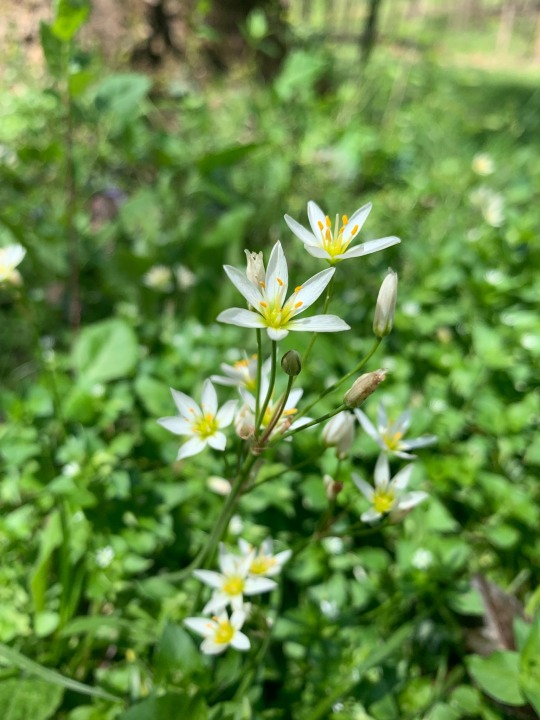


nothoscordum bivalve (crowpoison) / claytonia virginica (Virginia spring beauty) / ranunculus fascicularis (early buttercup) ?/ erigeron philadelphicus (Philadelphia fleabane)
10 notes
·
View notes
Text
Nature Memo #1
I decided to go on a little adventure over the weekend since I had three days off (I generally work on the weekends and am almost always on-call for crisis situations). I picked up a new journal so that I could collect plant samples and press them. I've been intending to do this for way too long (2011) but have not gotten around to doing it until now.
I find nature to be mesmerizing and way too often taken for granted. Parks are great, and those with unpaved nature trails are even better. But even then, they are taken for granted.
In any event, below are the list of observations that I made. This is incomplete because I did not include the trees and shrubs that were observed. Of the 29 listed items below, 10 were ones that I had not previously recorded, so I'm pretty excited about that. The total number of living species (plants, insects, birds, reptiles, fungi, arachnids, mammals, fish, mollusks, amphibians, and other species) that I have recorded (as in, photographed, dated, and confirmed the species of) is now 276.
Plants observed (all pressed!)
Oxalis triangularis, False Shamrock
Narcissus poeticus, Poet’s Narcissus
Achillea millefolium, Common Yarrow
Muscari neglectum, Grape Hyacinth
Galium aparine, Catchweed Bedstraw
Stellaria media, Common Chickweed
Oxalis violacea, Violet Woodsorrel
Vinca minor, Lesser Periwinkle
Bowlesia incana, Hoary Bowlesia
Narcissus tazetta, Bunch-flowered Daffodil
Veronica persica, Bird’s-eye Speedwell
Valerianella locusta, Common Cornsalad
Allium vineale, Wild Garlic
Cardamine hirsuta, Hairy Bittercress
Ranunculus hispidus, Bristly Buttercup
Ornithogalum umbellatum, Common Star-of-Bethlehem
Houstonia pusilla, Tiny Bluet
Viola bicolor, American Field Pansy
Claytonia virginica, Virginia Spring Beauty
Insects observed
Camponotus pennsylvanicus, Black Carpenter Ant
Papilio rutulus, Western Tiger Swallowtail (Butterfly)
Coleomegilla maculata, Spotted Pink Ladybeetle
Polistes Carolina, Red Wasp
Eurema lisa, Little Yellow (Butterfly)
Celastrina ladon, Spring Azure (Butterfly)
Amphibians observed
Pseudacris crucifer, Spring Pepper (Frog)
Fungi observed
Trametes versicolor, Turkey-tail
Cladonia evansii, Evan’s Deer Moss
Arachnids observed
Oxyopes salticus, Striped Lynx Spider
Next step is to let the pressed plans dry, followed by labeling, dating, notes on GPS coordinates for each sample, as well as information on whether it it is edible, seasonal growth, and if I am feeling particularly brave I will attempt to draw them.
All of these samples were taken in Arkansas between Siloam Springs, Pea Ridge National Battlefield, and Bella Vista.
#plants#pressing plants#hiking#arkansas nature#oklahoma nature#pea ridge national battlefield#insects#fungi#arachnids#amateur naturalist#biology#personal#nature memo#nerd#nerd alert#nerd stuff
2 notes
·
View notes
Text
Round 1: Plants

iPhone: Malcolmia Maritima
Google: Virginia Stock
Results: TIE

iPhone: Plant
Google: Wineberry
Results: GOOGLE WINS

iPhone: Virginia Springbeauty
Google: Claytonia Virginica
Results: TIE

iPhone: Garlic Mustard
Google: Garlic Mustard
Results: TIE
Round 1 Results:
iPhone 0
Google Lens 1
Reflections: the flowers definitely made it easier on them. When I tried on thickets or patches of plants, they both short-circuited and didn't know what to focus on.
1 note
·
View note
Text
ok ok experimenting with the idea of succession-blooming native plant "lawn". i fully expect to have to look for or even select for traffic tolerance. cant have it all, yk? anyway. plants i'm considering so far:
Claytonia virginica
Viola species (i think there are about 12 to pick from local, could go wild and plant em all in their respective microclimates)
Carex pensylvanica, appalachica, eburnea, and probably like 30 other sedges
Podophyllum peltatum !!!!!
Fragaria virginiana
Geranium maculatum
Chrysogonum virginiatum
Arctostaphylos uva-ursi
Mitchella repens
Erythronium americanum 😍
Bouteloua dactyloides and gracilis and i have to read up on the local grasses
Diervilla lonicera omg i DID forget abt her for a sec how could i
Eragrostis spectabilis
Ruellia humilis
Schizachyrium scoparium ofc
Thalictrum spp,
Sisyrinchium angustifolium
Parthenocissus quinquefolia
0 notes